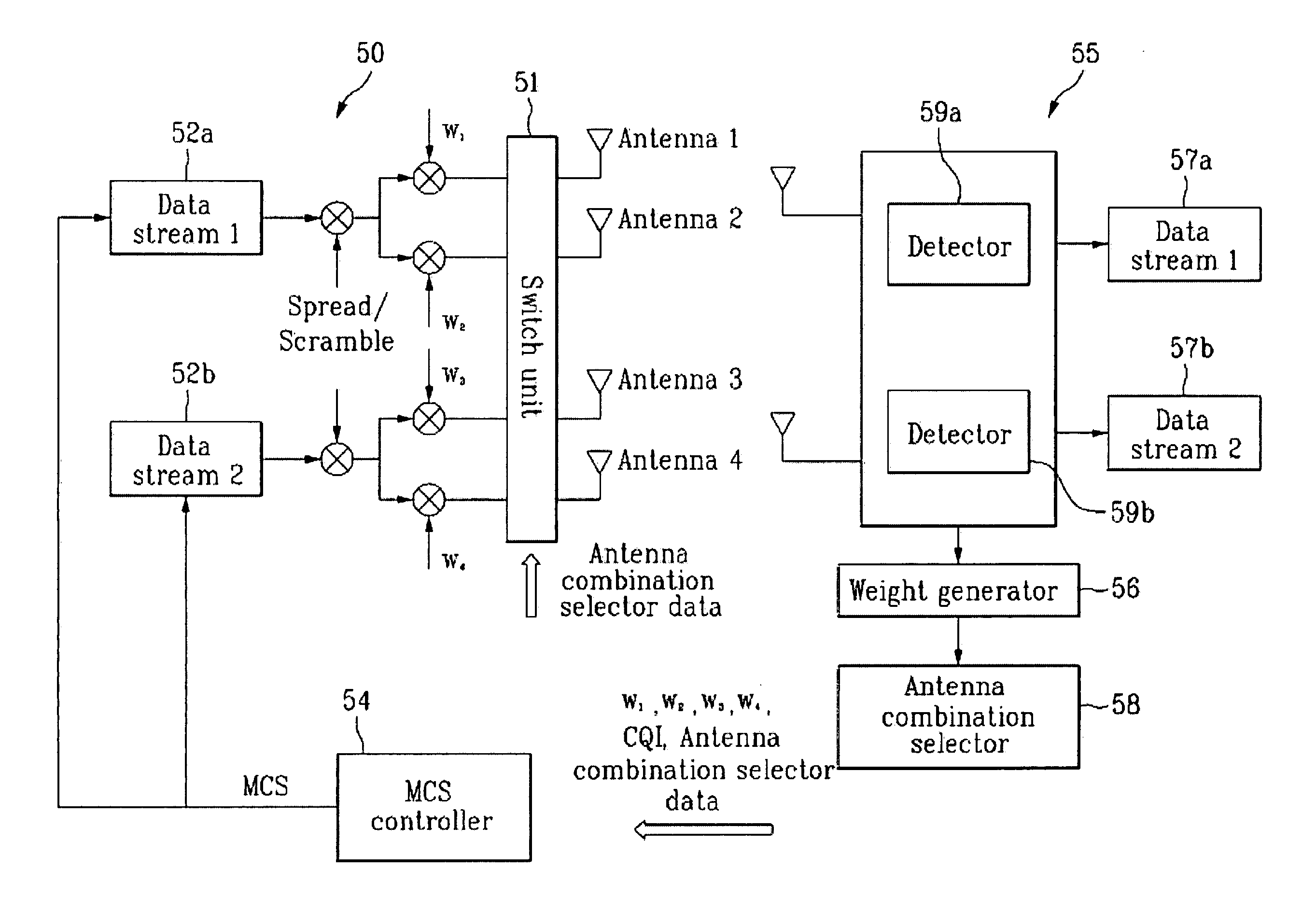Method and system for transmitting and receiving data streams
a data stream and transmission method technology, applied in the field of transmission systems, can solve the problems of inefficiency and delay of transmission, loss of data transmission capacity,
- Summary
- Abstract
- Description
- Claims
- Application Information
AI Technical Summary
Benefits of technology
Problems solved by technology
Method used
Image
Examples
Embodiment Construction
[0027]Reference will now be made in detail to the preferred embodiments of the present invention, examples of which are illustrated in the accompanying drawings. Wherever possible, the same reference numbers will be used throughout the drawings to refer to the same or like parts.
[0028]As a part of diversity transmission scheme, Space Time Transmit Diversity (STTD) and modes 1 and 2 of Transmit Antenna Array (TxAA) are widely used. The STTD scheme is an open loop technique using two antennas to exploit diversity. More specifically, the STTD employs space-time coding to achieve diversity. Furthermore, the STTD scheme is applicable to all of the downlink physical channel except Synchronization Channel (SCH) of Wideband Code Division Multiple Access (WCDMA). Because STTD scheme does not require feedback signal, delays caused by feedback transmission does not affect transmission in the STTD scheme. The operation of STTD is further explained using the following Table 1.
[0029]
TABLE 1tt + T...
PUM
 Login to View More
Login to View More Abstract
Description
Claims
Application Information
 Login to View More
Login to View More - R&D
- Intellectual Property
- Life Sciences
- Materials
- Tech Scout
- Unparalleled Data Quality
- Higher Quality Content
- 60% Fewer Hallucinations
Browse by: Latest US Patents, China's latest patents, Technical Efficacy Thesaurus, Application Domain, Technology Topic, Popular Technical Reports.
© 2025 PatSnap. All rights reserved.Legal|Privacy policy|Modern Slavery Act Transparency Statement|Sitemap|About US| Contact US: help@patsnap.com



